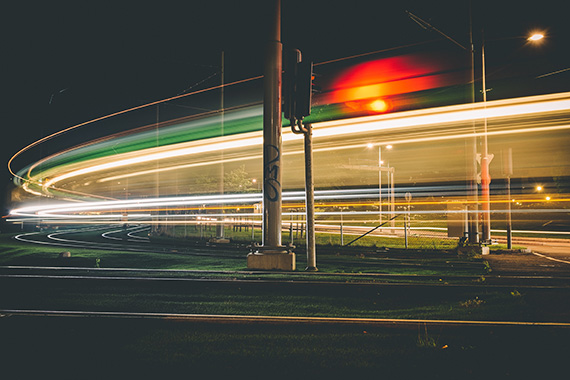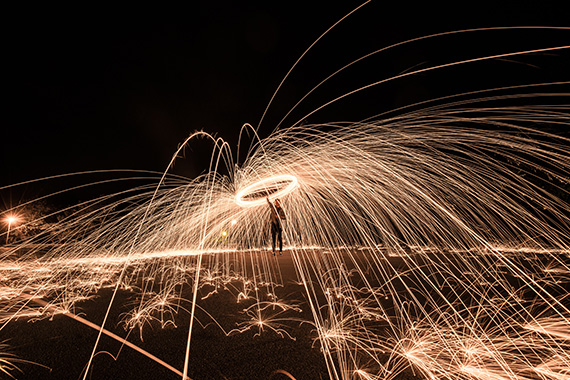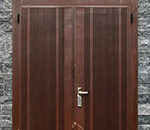There is a special setting on all DSLR and mirrorless cameras that allows the photographer to go beyond the longest automatic shutter speed setting of 30 seconds. In fact, this special setting allows infinitely longs exposures to be made. This is the Bulb setting, or Bulb exposure mode.

Photo by Mattias Diesel
The shutter speed range on a DSLR camera finishes at 30 seconds. One click below that selection is Bulb, which allows the photographer to manually hold the shutter open for as long as is required as the shutter button is pressed down. The camera bulb exposure setting is only available in Manual mode.
The Bulb mode is basically a creative feature. It allows shots to be taken that are minutes long, rather than seconds. A typical image to capture using this feature is one of star trails when the night sky is clear. Simply aim the camera to the north or south celestial pole, depending on which hemisphere you live.
Another common image to capture is of the trails of vehicle lights when it is dark. These moving lights will create artistic streaks of white and red patterns emitted from the head lights and tail lights of passing traffic. If you are near a traffic junction you may capture orange streaks from indicator lights. And if you’re lucky enough, you may get a streak of blue from the flashing light of an emergency vehicle.
Here then are the three things you must do in order to shoot in Bulb mode, in other words, with the camera’s shutter open:
Use a Tripod: Attach the camera to a tripod in order to ensure that no camera movement will ruin the shot. You don’t have to use a tripod so long as the camera is on a solid base, like a wall. Turn off the any anti-shake mechanisms you may might have on your camera or on the lens.
Use a Remote Shutter Release: A remote shutter release will prevent vibrations ruining the shot as you press the shutter button. No matter how careful you are, you will always cause a tiny bit of vibration as you depress the shutter button. That doesn’t matter with fast shutter speeds, but in Bulb mode you will record vibrations, however small. If you don’t have a remote cable, use the camera’s built-in self-timer delay, which is just as effective. A two second delay will be adequate.

Photo by Cody Board
Switch to Manual Mode: While metering can be less straightforward with the Bulb exposure setting due to the extended exposure times, it’s still a useful guide for initial settings. Therefore, switch your camera to Manual mode to have full control over the exposure. Start by selecting an aperture that suits your scene; f/8 or f/11 are good starting points as they often provide a sharp image across a wide depth of field. Set your ISO to a low value like 100 or 200 to reduce sensor noise, which can be more pronounced in long exposures. Because Bulb mode exposures can vary greatly, it’s advisable to take several test shots to refine your settings. Adjust the aperture, ISO, and initial exposure time based on these tests until you achieve the desired effect for your final long-exposure image in Bulb mode.
About the Author
Chris Smith is a photography expert and writer for an online magazine.
Like This Article?
Don't Miss The Next One!
Join over 100,000 photographers of all experience levels who receive our free photography tips and articles to stay current:






Dear Chris, I sure hope that you are a very good writer and that you don’t make a living as a photographer. Why, because like many other writers on the internet you are only half right.
“Switch to Manual Mode: Since metering is completely irrelevant when using the Bulb exposure setting, switch the camera to its Manual mode.”
The exposure should be correct no matter what! You are telling people that it makes no difference when you use the B setting. Obviously, you have never done this and if you did, you were just guessing as you tell your readers. There is no guessing in photography, you either know or you just guess. I have been a photographer in Chicago for 40 years and a photography teacher also in Chicago for 28 years. It is possible to correctly expose either film or a digital sensor in the middle of the Sahara desert at night, without guessing, as long as you know photography. Very disappointing! I actually wrote an article on this same website, but I have read so many half truths here that I am just put off when I get a new email from PictureCorrect.
Good tutorial. Playing with the bulb function is one of the most creative features in photography.
@Thomas, it is true about IS lenses, as the system gets confused by the long exposure and tends to jerk and create motion blur. Although some new IS lenses have special software to counter act this.
Boyet’s photo is very nice! It perfectly captures the flow of energy in the Shanghai financial district. The sky is also radiating a bluish pattern which accentuate the overall picture. Modest use of Photoshop I assume was done, but only light-room related function I suppose. A little bit earlier timing (blue hour) maybe beneficial, however the current photo is already great.
Well done :)
P.S: I believe the original photo have the Jin Mao Tower uncropped like above…
Great photos and tips. Also it might be a good idea to turn off image stabilization on your lens if it has it, when you are taking a picture this way. I read that somewhere and found that it made my images less fuzzy. That might just be for that lens, but worth testing out at least.
love Johnny Dickerson’s image… just shows what you can achive…